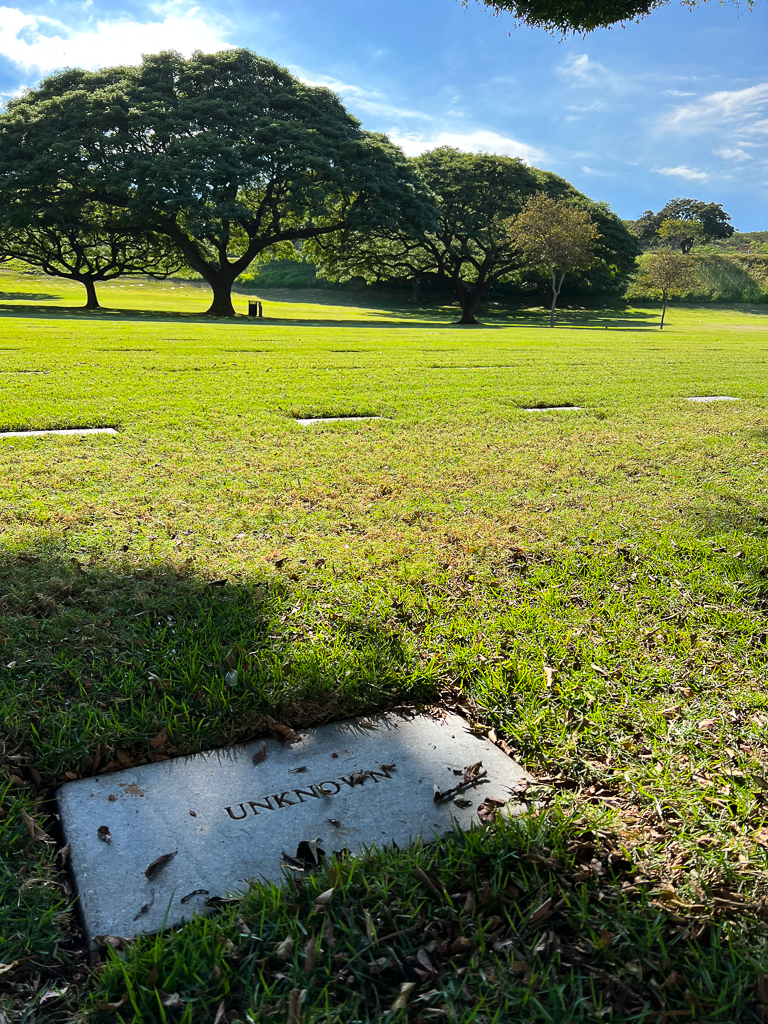The National Memorial Cemetery of the Pacific (aka the Punchbowl Cemetery) is one of the most popular attractions in Oahu, Hawaii.
You can check out the beautiful scenery while paying respects to tens of thousands of US veterans but before you visit, it helps to have a sense of what you’ll find here.
Below, I’ll give you a guide on what to expect when you visit the National Memorial Cemetery of the Pacific.
Table of Contents
What is the National Memorial Cemetery of the Pacific?
The National Memorial Cemetery of the Pacific is a special cemetery located in the Honolulu Punchbowl that honors men and women who served in the United States Armed Forces, especially those who have given their lives in doing so.
Where is the National Memorial Cemetery of the Pacific?
The National Memorial Cemetery of the Pacific is located at: 2177 Puowaina Dr, Honolulu, HI 96813.
The cemetery is open daily from 8:00 a.m. to 6:00 p.m.
As you approach the cemetery you’ll first come across the visitor center and administration building but if you don’t have any reason to visit that building, just keep going and you’ll eventually see the entrance gates to the cemetery. Once you are on Puowaina Dr, it’s impossible to miss.

National Memorial Cemetery of the Pacific (brief) history
Efforts to place a cemetery here first began in the 1890s but locals were not big on the idea of having a city of the dead hovering above a city of the living.
However, later on in the 1940s deaths of US soldiers were adding up and there needed to be a place to properly lay the fallen to rest.
It wouldn’t be until two years after the end of WWII in 1947 that pressure mounted for the military to find a permanent burial site for the remains of thousands of servicemen from World War II, mostly from the island of Guam.
Then, in February of 1948 construction of the cemetery began and the first internment took place on January 4, 1949.
At the time, the cemetery was marked with white wooden crosses and the Stars of David just like other cemeteries located abroad.
But those were only temporary markers and in 1951, after a lot of public outcry and controversy, they were replaced with permanent flat granite grave markers.
Quartermaster General to Senator Paul Douglas in December 1952, explained that religious emblems are not customary for markers in national cemeteries:
Crosses do not mark the graves of the dead of our country in other national cemeteries. No cross marks the burial of our revered Unknown Soldier. From Arlington to Golden Gate, from Puerto Rico to Hawaii, the Government’s markers in national cemeteries for all our hero—dead are of the traditional designs…[s]ome are upright and some are flat. None is in the form of a religious emblem
Eventually, over 13,000 soldiers and sailors who died during World War II were laid to rest here at the Punch Bowl. And it’s estimated that in total approximately 53,000 World War II, Korean War, and Vietnam War soldiers are interred here.
With very limited plot space, the vast majority of remains that now enter the cemetery are cremated remains.
As for eligibility who can be buried here, it’s not as strict as Arlington National Cemetery and is open to all members of the armed forces who have met a minimum active duty service requirement and were discharged under conditions other than dishonorable
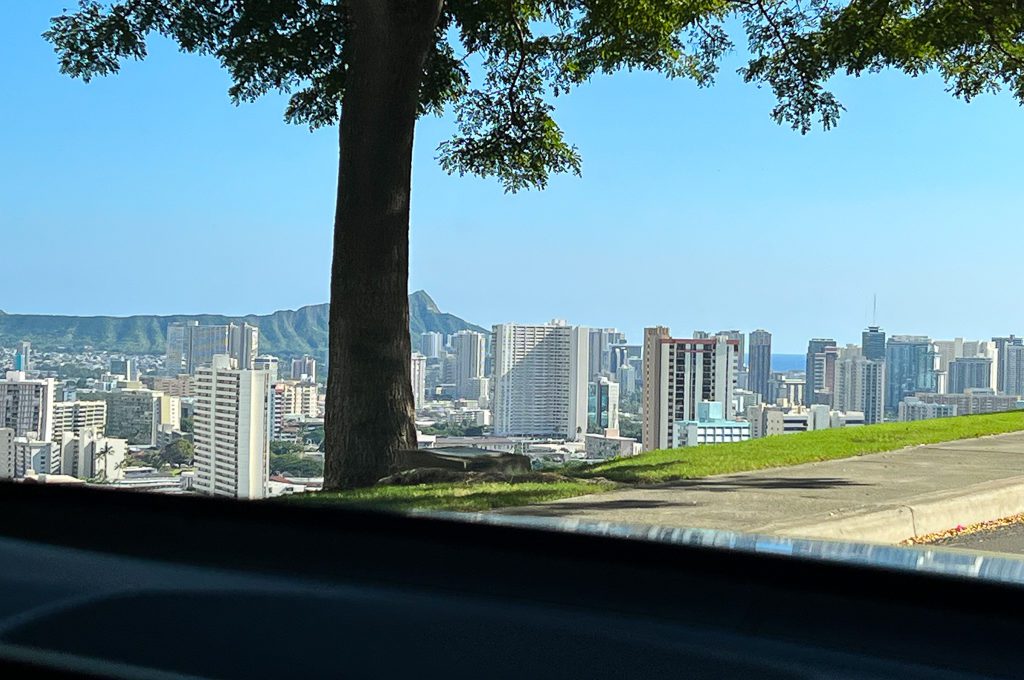

Punchbowl Cemetery
There are a handful of different areas you’ll probably want to check out when you arrive, including:
- Mall Drive
- Honolulu Memorial
- Chapel
- Memorial Walkway
- Two overlooks
I recommend taking a look at this map to give you an overview of what there is and where it’s located.
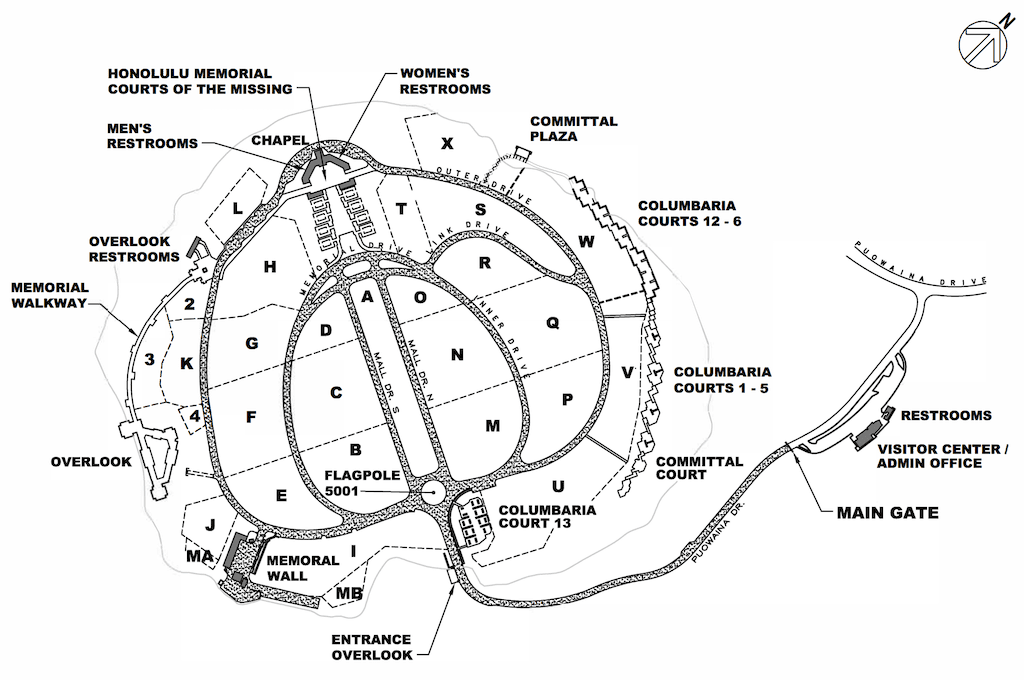
There are different ways to explore the Punch Bowl cemetery.
We decided to drive in and park near the main entrance, near Columbaria Court 13.
It’s a small parking lot so it might fill up but we were able to find a spot and then make the walk along the main mall on Mail Dr N.
There’s a sidewalk and it’s pretty well shaded as you walk through the mall.
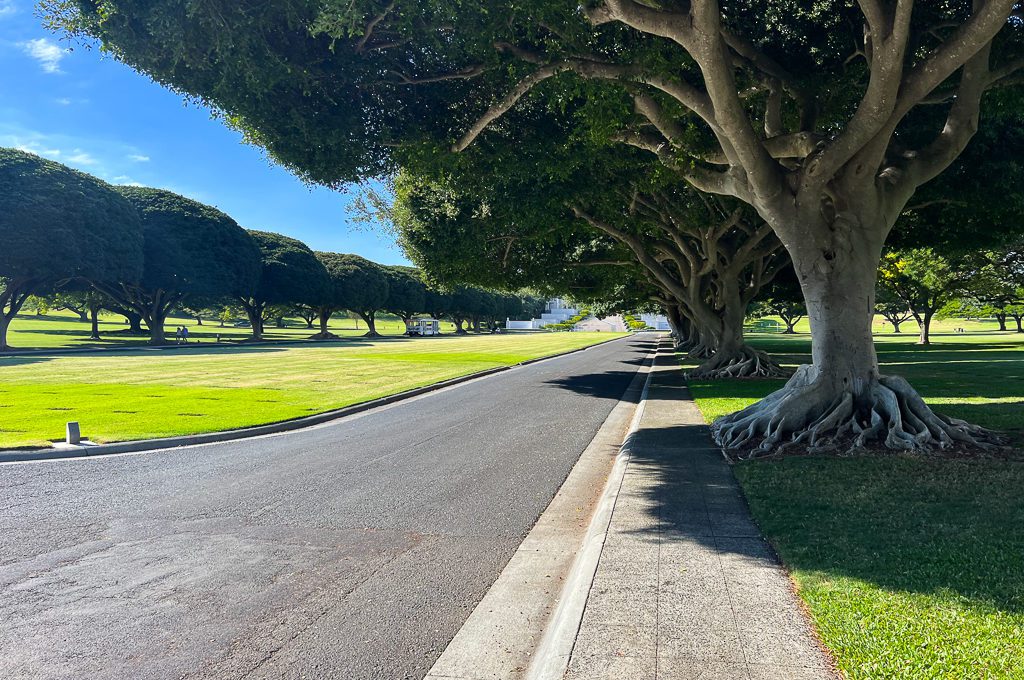
It’s a beautiful and peaceful setting and it reminded me a lot of our visit to Arlington Cemetery in Washington DC.
If you’re looking for specific graves you can use this tool to help you locate where they are. It will also give you some information about certain individuals including their background and the war they served in.
Related: USS Arizona Memorial Review
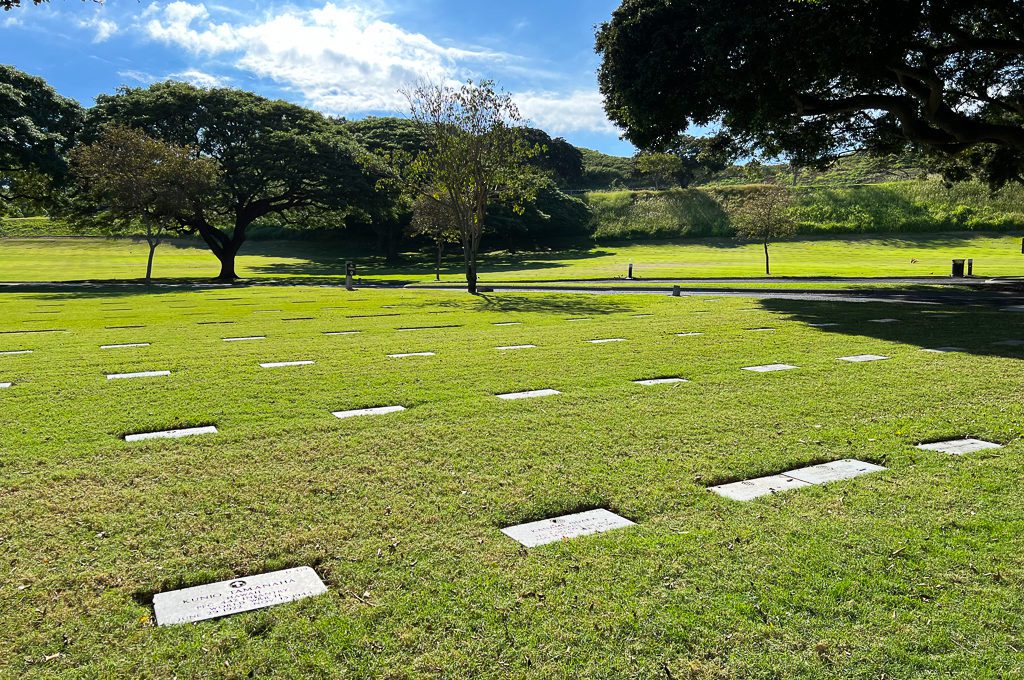
One of the most moving sites you’ll see will be the gravestones for the unknown.
Thankfully, these are becoming less common to see.
Recent advancements in DNA technology have allowed the military to identify many of the remains that previously were unknown.
In August 2001, many of the grave markers that previously said unknown were replaced with markers that included “USS Arizona” after it was determined they perished on the USS Arizona.
Also, remains of nearly 400 unknowns from the USS Oklahoma who were killed at Pearl Harbor were dug up and most of them have been identified.
One can only imagine the amount of closure that families feel when unknown remains like that are identified.
Related: USS Oklahoma Memorial Guide (Pearl Harbor)
Honolulu Memorial at the National Memorial Cemetery
In 1964, the American Battle Monuments Commission erected the Honolulu Memorial, which is the large structure that stands at the end of the mall. As you approach the monument be prepared for goosebumps.
Initially, the monument was designed to honor the sacrifices of those in the Pacific during World War II and in the Korean War but it was eventually expanded to include the Vietnam war.
It reads:
IN THESE GARDENS ARE RECORDED
THE NAMES OF AMERICANS
WHO GAVE THEIR LIVES
IN THE SERVICE OF THEIR COUNTRY
AND WHOSE EARTHLY RESTING PLACE
IS KNOWN ONLY TO GOD
In this memorial, within the marble slabs of the Courts of the Missing which flank the side of the memorial, you can find 28,788 military personal names who are missing in action or who were lost or buried at sea during these different wars.

If the remains of a missing service man or woman are eventually identified, a rosette is placed by their name.
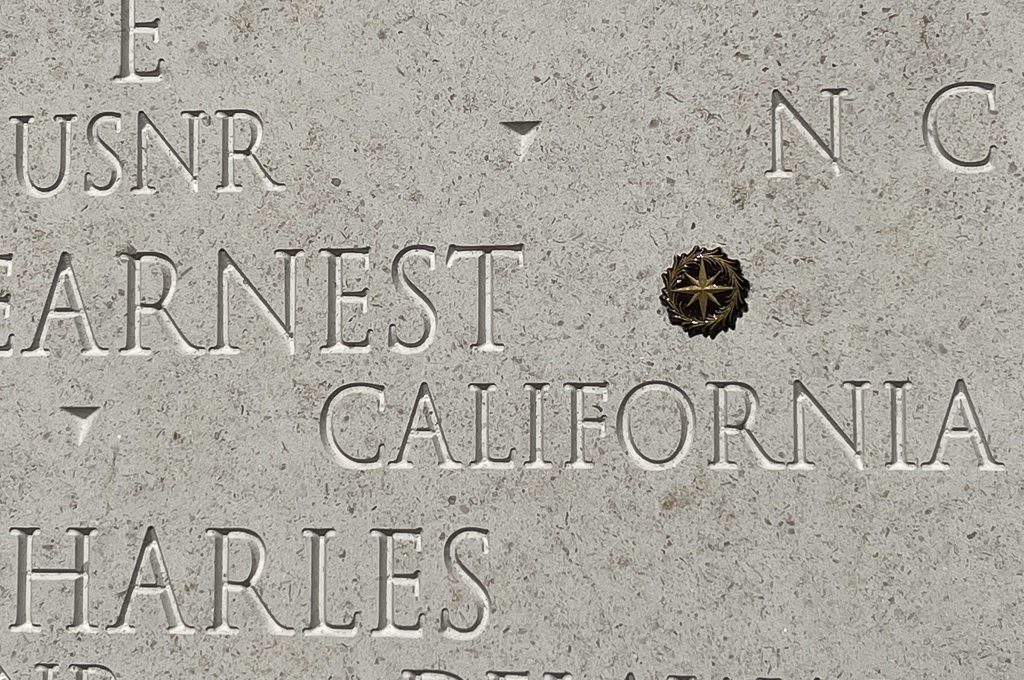
Each court is organized by the war and branch of service involved in the war.
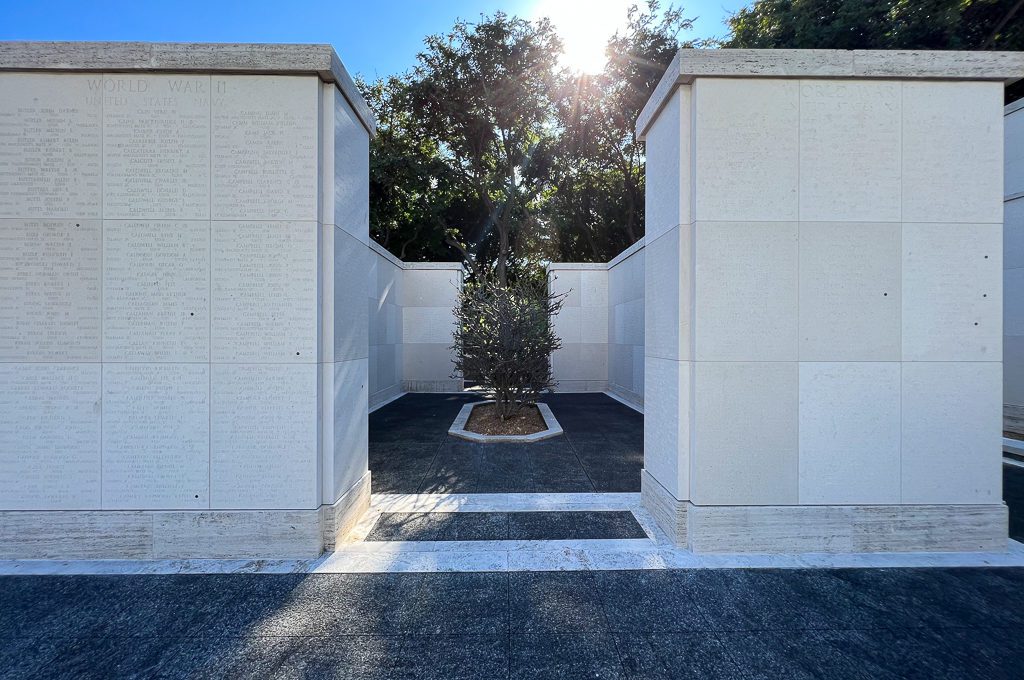
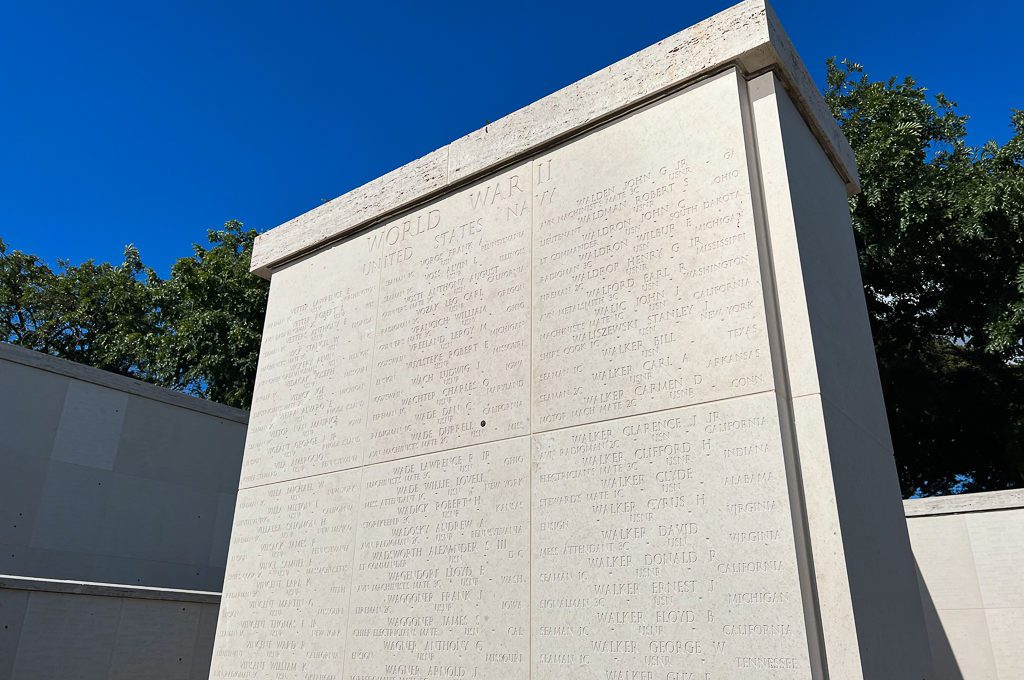
Once you approach the top of the memorial, you’ll see the 30-foot Lady Columbia, also known as Lady Liberty, standing on top of a Navy carrier’s prow holding a laurel branch.
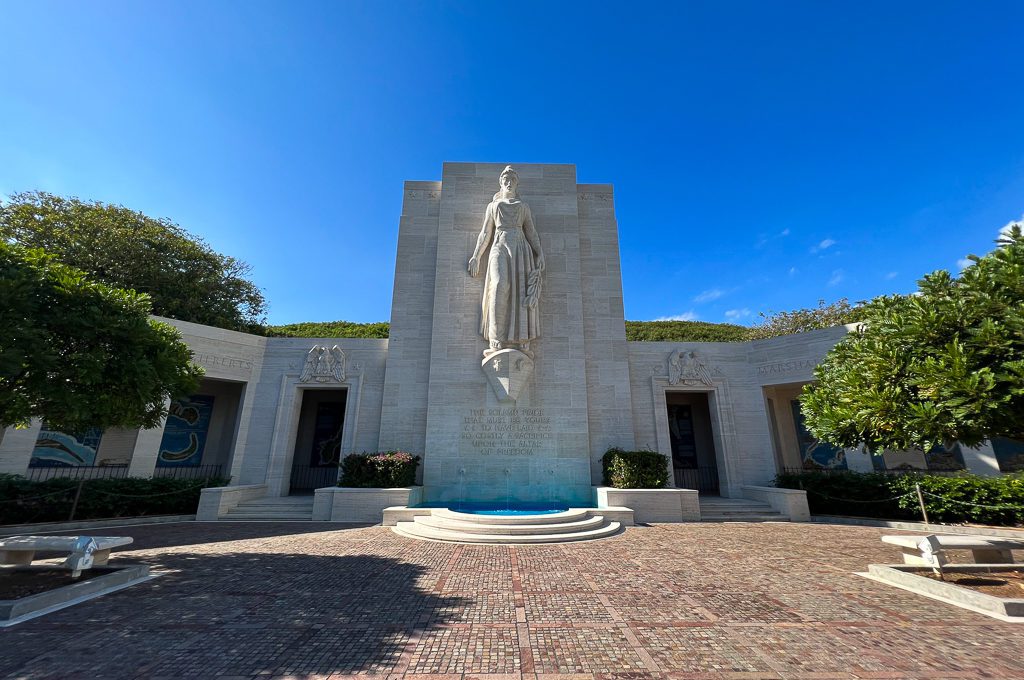
She’s meant to represent all of the grieving mothers who have lost a loved one during these wars.
Quite fittingly, below her is a quote from Abraham Lincoln’s letter of condolence delivered to Lydia Bixby on November 25, 1864.
Bixby lost five sons in the Civil War.
The quote reads:
“THE SOLEMN PRIDE THAT MUST BE YOURS TO HAVE LAID SO COSTLY A SACRIFICE UPON THE ALTAR OF FREEDOM”
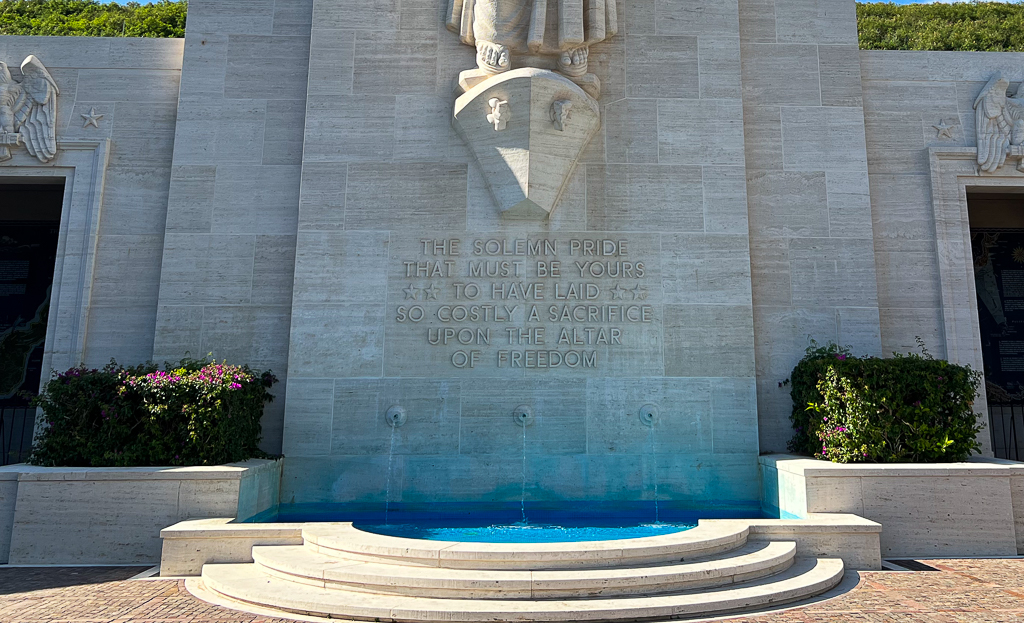
There are different mosaics on the walls that give you very detailed operations maps which tell the story of different wars and battles where America triumphed.
You’ll also find detailed descriptions of the battles that highlight the achievements of the American armed forces in the central and south Pacific regions and in Korea.
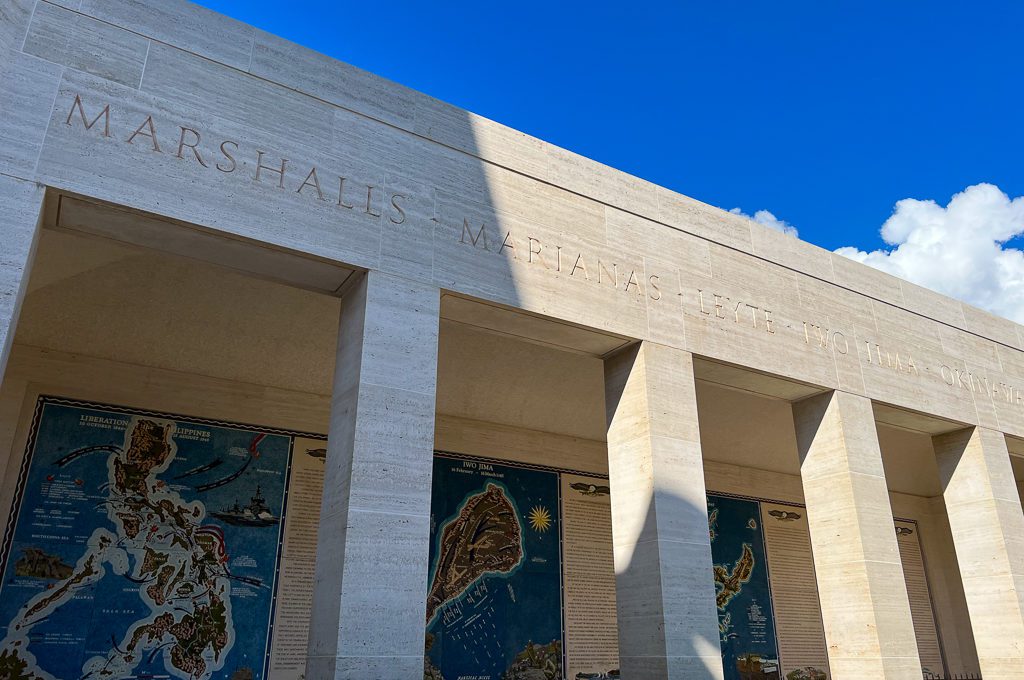
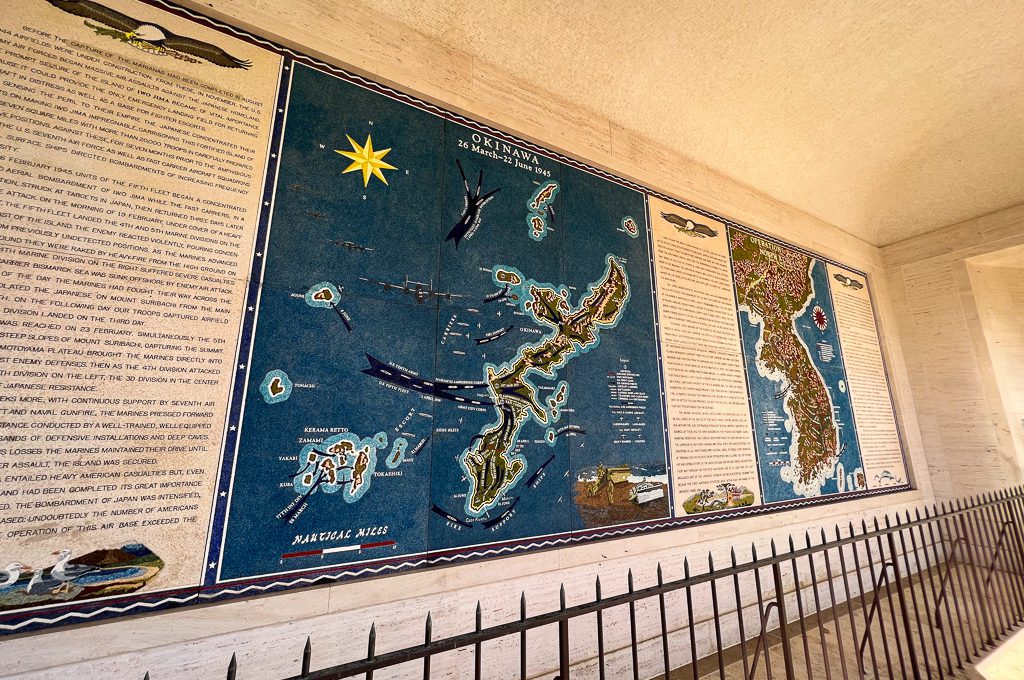
Chapel
Inside the memorial you find a small devotional chapel where you can leave your own remarks about the memorial. Chapels like this are also found in other World War II memorials in Europe and in the Philippines.
If you need to find a restroom, you can find them in the area behind the chapel.
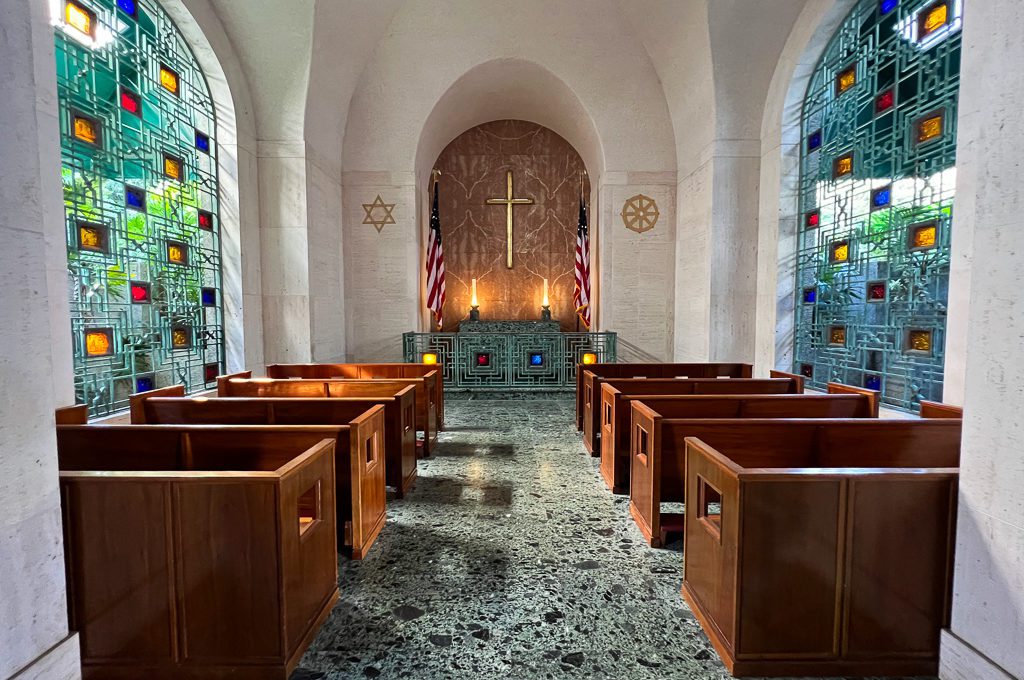
Punchbowl Scenic Lookout
One of the highlights of your trip will be to the Punchbowl Scenic Lookout.
You’ll take a paved walkway that takes you up to a beautiful overlook area with multiple views looking out to Honolulu.
On your way up, you’ll walk up memorial walkway that consists of a series of different memorials.

As you make your way to the rim, it really is a pretty breathtaking view of Honolulu.
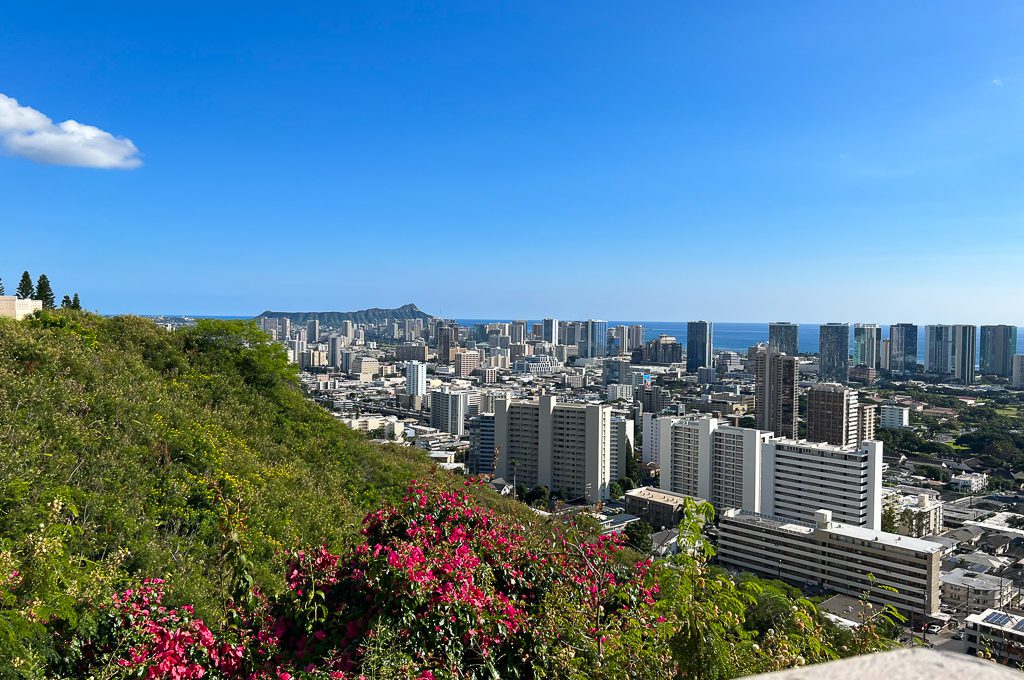
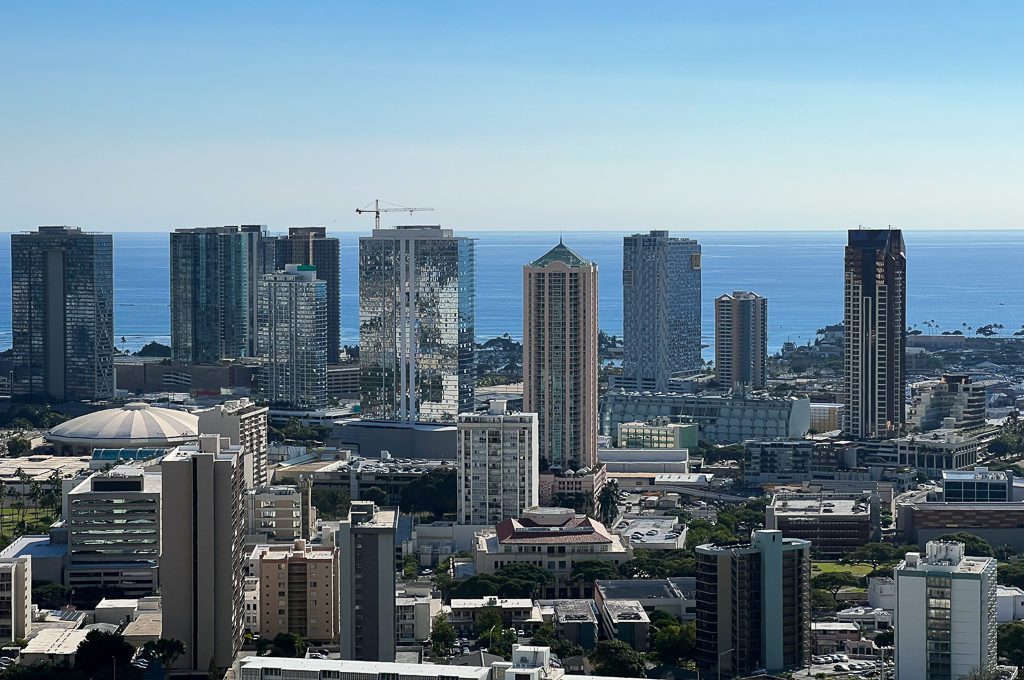
The view of the interior of the crater is beautiful as well.
It’s estimated that the crater was formed between 75,000 and 100,000 years ago during the Honolulu period of secondary volcanic activity.
History indicates that the crater was once used as an altar where “Hawaiians offered human sacrifices to pagan gods and the killed violators of the many taboos.”
In more recent history, during the reign of Kamehameha the Great, two cannons were mounted at the rim of the crater to “salute distinguished arrivals and signify important occasions.”

Before you leave, be sure to check out the small memorial at the overlook dedicated to the POWs who were forced to work on the Siam-Burma death railway.
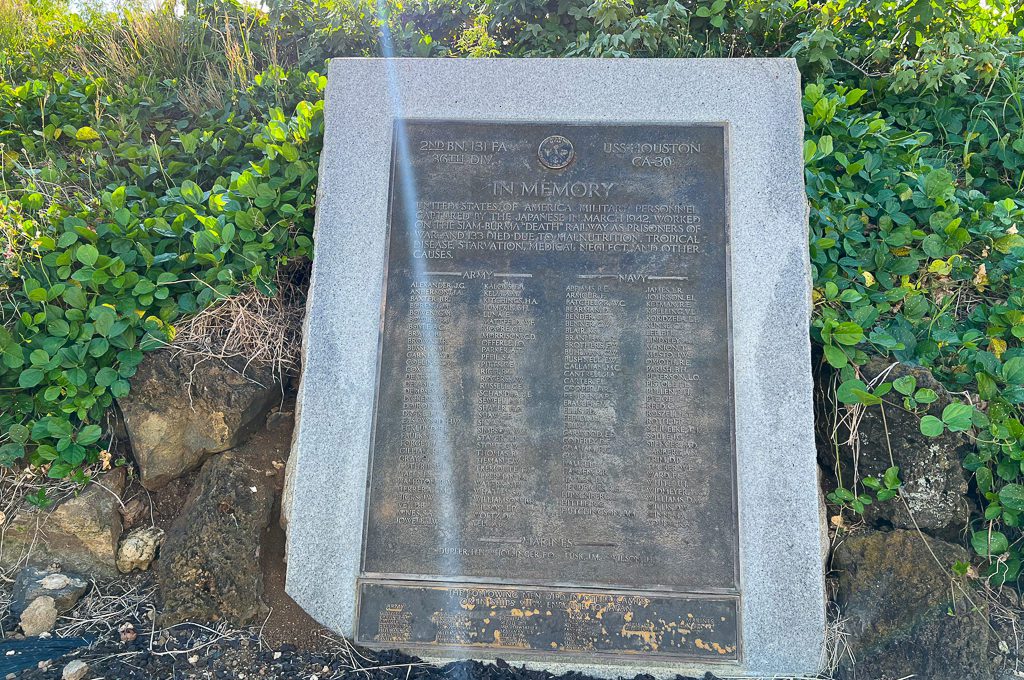
Final word
For the longest time I avoided cemeteries.
They always made me feel uneasy and uncomfortable. Perhaps because I always felt just a little bit too close to death.
But after visiting Arlington National Cemetery in Washington DC I started to change my view on cemetery visits.
I realized that they actually can be quite beautiful and peaceful settings.
The National Cemetery of the Pacific only reinforced this view and I would strongly recommend to take a visit here.
I thought it was perfect that this visit came at the end of our Hawaii trip after we had already seen all of the Pearl Harbor sites.
It sort of provided a bit of closure to that experience of paying respects for all of those who lost their life to preserve our freedom and left me with a sense of gratitude as we made our way back to the mainland.
Daniel Gillaspia is the Founder of UponArriving.com and the credit card app, WalletFlo. He is a former attorney turned travel expert covering destinations along with TSA, airline, and hotel policies. Since 2014, his content has been featured in publications such as National Geographic, Smithsonian Magazine, and CNBC. Read my bio.


